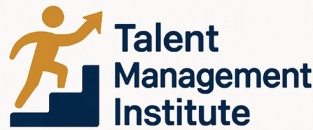
Understanding Employee Motivations
The Power of Employee Motivation
Understanding what drives employees can significantly improve productivity and morale in the workplace. As each individual is unique, motivations vary and can stem from personal aspirations, financial incentives, or the desire for professional growth. One crucial aspect to consider is how employee scheduling impacts motivation. For example, accommodating shifts that align with personal life can boost satisfaction and performance.
Organizations often employ tools like employee scheduling software to efficiently manage shift planning, allowing employees to clock in and out seamlessly. Such tools not only optimize work hours but also reflect an understanding of different motivational needs by offering flexibility and transparency in schedules. Incorporating a mobile app into the scheduling process can further enhance the user experience by providing real-time updates and easy access to schedules on the go.
Companies like Humanity offer a comprehensive suite of features designed to streamline scheduling and foster motivation. This includes auto scheduling and integrated time clock functions that reduce manual errors and save time, allowing employees to focus more on their roles rather than administrative hurdles. Additionally, features like open shifts offer employees opportunities to choose work that aligns with their preferences, thereby increasing engagement.
For organizations seeking a thorough understanding of the interplay between motivation and productivity, exploring the role of a talent coordinator can provide valuable insights.
Effective Communication Strategies
Enhancing Dialogue for Greater Understanding
Effective communication is the cornerstone of talent management, driving productive interactions and fostering a sense of belonging among employees. In today’s fast-paced work environment, utilizing appropriate communication strategies is crucial to ensuring your team remains cohesive and motivated.
To truly understand your workforce, it's important to engage with them meaningfully. This starts with clear and consistent communication, both in person and through digital mediums like mobile apps and communication platforms. People appreciate transparency, and providing regular updates on scheduling, shifts, and team changes can prevent confusion and build trust.
Leveraging Technology for Seamless Interaction
Incorporating advanced technologies such as employee scheduling apps and mobile systems like the TCP Humanity platform can greatly enhance the flow of communication. These tools allow for better shift planning, automate notifications, and provide a user-friendly interface for both managers and employees to interact seamlessly. By using these systems, employees can easily access their schedules and any changes, ensuring they are always informed.
- Time Efficiency: Utilizing a time clock feature assists in tracking work hours effectively, helping manage shifts and official personnel assignments.
- Data Accessibility: These digital solutions offer pre-built templates and a comprehensive user manual which guides managers in efficient scheduling.
- Flexibility and Adaptability: The auto scheduling function and third-party integrations make it easier to manage open shifts, offering flexibility to both employees and managers.
Investing time in mastering these technological tools not only streamlines communication but also enhances the scheduling process, allowing employees to feel more connected and valued in their roles.
Cultivating a Positive Workplace Culture
Fostering a Collaborative and Inclusive Environment
A positive workplace culture is the heart of employee satisfaction and productivity, encouraging employees to leverage their humanity and actively participate in team efforts. Creating such an environment involves promoting open shifts where employees can have a voice in their scheduling. A user guide to improving culture highlights flexibility, communication, and app-based tools that facilitate better interaction among team members.
One effective strategy is adopting a comprehensive mobile app for employee scheduling. This can help manage work hours efficiently, offering a clock feature to keep track of shift timing seamlessly. Integrating software like tcp software allows for seamless shift planning and accommodates individual scheduling rules. This guide can be instrumental in exploring digitized employee management for a stress-free user interface.
To ensure satisfaction and continuous engagement, organizations should also invest time in auto scheduling and engaging third party platforms that improve scheduling precision. With comprehensive mobile solutions, employees can quickly adapt to shift changes and have access to official personnel folders from anywhere.
By incorporating a robust tcp humanity pricing structure, businesses cater to diverse needs, fostering a flexible and supportive atmosphere that retains top talent. Such initiative aids teams in adapting to varying workloads and shifts effortlessly, assuring them access to necessary data for informed decision-making.
Strategies for Employee Development
Empowering Growth Through Strategic Development
In today's dynamic work environment, employee development is not just a benefit but a necessity. It goes beyond merely offering training programs; it involves a strategic approach to nurturing talent and aligning individual growth with organizational goals. A well-crafted development plan can significantly enhance employee satisfaction and retention, ultimately benefiting the entire team.
To effectively manage employee development, consider these strategies:
- Individualized Development Plans: Tailor development plans to meet the unique needs of each employee. This personalized approach respects the humanity of each team member, recognizing their distinct aspirations and potential. Use data from performance reviews and feedback sessions to guide these plans.
- Flexible Scheduling and Shift Planning: Offer flexible scheduling options to accommodate different learning and development activities. Utilize employee scheduling software to manage shifts efficiently, ensuring that development opportunities do not disrupt regular work hours. Tools like mobile apps for shift scheduling can facilitate seamless integration of training sessions into work schedules.
- Mentorship and Coaching: Encourage a culture of mentorship within your organization. Pairing employees with mentors can provide guidance and support, helping them navigate their career paths effectively. This can be an invaluable feature in fostering a positive workplace culture.
- Access to Resources: Provide access to a variety of learning resources, such as online courses, workshops, and seminars. Consider investing in a user-friendly platform that offers a wide range of development options, allowing employees to learn at their own pace.
- Regular Feedback and Adjustments: Continuous feedback is crucial in the development process. Schedule regular check-ins to discuss progress and make necessary adjustments to development plans. This approach ensures that the development process remains aligned with both employee goals and organizational needs.
By implementing these strategies, organizations can create an environment where employees feel valued and motivated to grow. This not only improves individual performance but also strengthens the overall team dynamic, positioning the company for long-term success.
Managing Performance and Feedback
Performance Check-Ins: Fostering Growth and Improvement
Managing performance and feedback in a workplace is an intricate process that requires a balance of humanity and technology. By understanding the motivations of employees and leveraging effective communication strategies, organizations can set the stage for meaningful performance evaluations. The aim is not just to assess, but to improve and develop talent through constructive feedback.
Regular performance check-ins enable employees to reflect on their accomplishments and areas for improvement. With the use of modern tools such as employee scheduling software, it becomes increasingly easy to monitor employee performance. These platforms can provide valuable data that helps in identifying trends and setting realistic goals.
Here's how to manage performance and feedback effectively:
- Consistent Feedback: Shift scheduling and time management apps offer features that help in automating feedback processes, allowing for real-time input from mentors and supervisors.
- Data-Driven Decisions: Utilize data from employee time clocks and mobile apps to guide discussions about performance. This approach ensures feedback is based on measurable performance metrics.
- Clear Communication: Facilitate open communication channels where employees feel comfortable discussing their progress. Apps like tcp software offer user-friendly interfaces that promote transparency.
- Goal Setting: Encourage employees to set personal goals aligned with organizational objectives. This helps in aligning individual performance with the broader team goals.
By integrating these strategies, organizations can ensure that performance management is not just a periodic exercise but a continuous journey towards individual and organizational growth.
Retaining Top Talent
Ensuring Employee Retention
Retaining top talent is a crucial aspect of talent management. It requires a deep understanding of what drives your employees and how to keep them engaged over time. One effective way to achieve this is by implementing flexible scheduling options. Utilizing employee scheduling tools, such as a mobile app for shift planning, can significantly enhance the user experience and satisfaction.
These tools often come with features like auto scheduling and open shifts, allowing employees to have more control over their work hours. When employees feel they have a say in their schedules, it boosts morale and reduces turnover. Moreover, ensuring that the user interface of these apps is intuitive can further enhance their effectiveness.
Feedback and Development
Another key strategy is to provide continuous feedback and development opportunities. This not only helps in managing performance but also shows employees that their growth is valued. Regular feedback sessions should be part of the official personnel processes, recorded in a personnel folder for reference. This practice aligns with cultivating a positive workplace culture, as discussed earlier.
Data-Driven Decisions
Using data to make informed decisions about talent management can also aid in retention. Analyzing data from time clocks and shift scheduling systems can reveal patterns and help identify areas for improvement. This data-driven approach ensures that the strategies are aligned with the needs of the employees and the organization.
In conclusion, retaining top talent involves a combination of flexible scheduling, continuous feedback, and data-driven decision-making. By focusing on these areas, organizations can create an environment where employees feel valued and motivated to stay.













